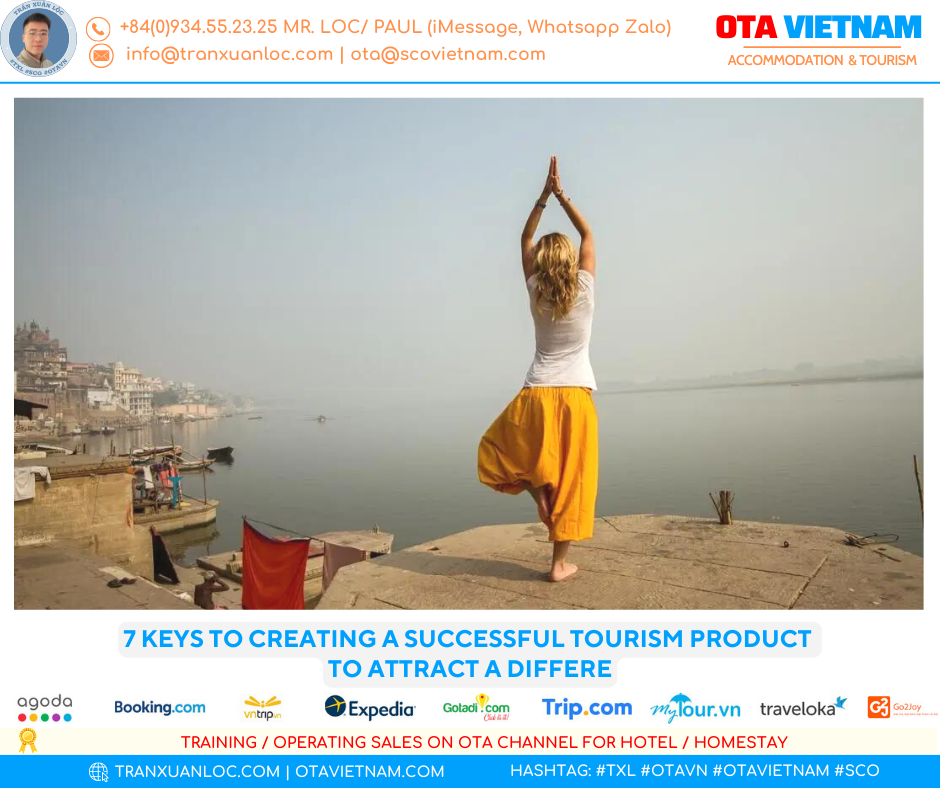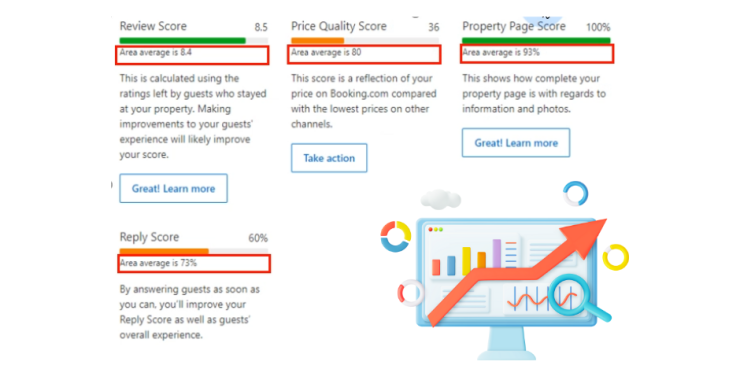7 Keys to creating a successful tourism product to attract a difference
Within the competitive tourism sector, innovation, and the offer of products to propose stands out as one of the real competitive advantages and differential elements to navigate with strength in this tough market. The tourism product becomes an important resource to work to attract a different audience and diversify the philosophy and brand of our travel agency. But… How do you create a successful tourism product? Let’s highlight the keys that will help you develop an optimal tourism product. Let’s start at the beginning…
What is a tourism product?
The tourism product is defined as the total set of functionally interdependent tangible and intangible elements that allow the tourist to meet their needs and expectations.
From a marketing point of view, the tourism product is a resource that fulfills two very different tasks:
- Each tourism product meets a need of its consumer through the benefits it incorporates.
- Tourism products are the means to achieve sales targets. The design of the tourism product itself is the claim to increase conversions.
Also, it is necessary to point out the importance of knowing the type of customer we want to attract and whether we can offer a product that meets the unique expectations of the selected niche of customers. It is equally important when designing a tourism product to consider the special travel agency regime to know the fiscal responsibilities and also how each transaction should be accounted for.
Also, our travel agency must have a brand culture and philosophy that must be in line with the tourism products to design and sell.
Basic functions of a tourism product
Given that meeting the needs and expectations of the client is a key factor in creating a tourism product, we must look to the functions that this tourism product must perform.
It is, therefore, possible to list 6 priority functions to be resolved to outline our tourism product project:
- Allows the tourist to participate in the main activity of the trip.
- Besides being a part of the main activity, it facilitates to live the total experience of the trip as the tourist wants.
- It facilitates transport to and from the destination, as well as within the destination itself.
- Enhance the social interaction of the tourist during the trip.
- Helps and simplifies travel preparation and management.
- It makes it easier for the tourist to remember and revive the trip, to share that trip and experience with other people.
Note: The main activity can be defined as the objective to be carried out with this tourist package: ecological tourism, cultural tourism, etc…
Through these functionalities, it is already possible to have a basic outline of what our tourism product should contain.
It is time to show the main keys to consider in drawing a professional and highly competitive tourism product.
Some example of tourism products
Tourism products are designed and adapted to the needs and desires of the selected audience. So, there are many possibilities. Here are some of the most popular tourism products:
Spiritual tourism
Spiritual tourism is tourism motivated by faith or for religious reasons.
What is the tourist looking for? An experience based on a sacred pilgrimage, a journey led by faith, religion, and spiritual realization. The tourist seeks to satisfy some personal or spiritual need through tourism.
Therefore, the design of the spiritual tourism product must focus on these two points to find different forms and intensities of spiritual tourism motivated to a greater or lesser extent by religious or, on the contrary, cultural needs or in the search for knowledge.
Spiritual tourism provides the visitor with activities and/or treatments intended to develop, maintain, and improve the body, mind, and spirit. Many elements are incorporated that involve a learning experience.
A good example is the tourism products related to the Camino de Santiago. A product that offers everything the tourist/pilgrim wants:
- Accommodations
- Transportation
- Support vehicles
- Guides
- Monitor…

Eng Otavn Otavietnam 940x788px 7 Key To Creating A Uccessful Tourism Product To Attract A Differen
Wine tourism
Wine tourism or wine tourism is one of the most fashionable forms of tourism. It is the type of tourism around the culture and professions of wine and vineyards, being related to culinary and cultural tourism.
What is the wine tourist looking for? The main motivation is to experience wine tastings and buy products from the region, but also identify other very important issues: Socializing, learning about wines, entertainment, rural environment, relaxation…
The main activities are based on the visit to vineyards, wineries, wine festivals, and wine shows, for which the tasting of grape wine and/or the experience of getting to know the wine region.
For example, a well-known tourism product for wine lovers is that linked to the city of Haro, designed with such important elements as:
- Hotels and other types of accommodation
- Round-trip transportation from the winery to the lodging location
- Visit wineries, wine libraries, restaurants.
- Activities are related to wine tasting, marriage… where the capacity to socialize and share experiences is encouraged.
Eco tourism
Ecotourism has grown in parallel with increasing society’s awareness of environmental protection.
Ecotourism is a type of tourism responsible for natural areas with special care in conserving the environment, sustaining the well-being of the local population, and involving knowledge and education.
What is the ecotourism tourist looking for? They are people with a great awareness of the environment, eager to know and be part of experiences that help the environment and others.
A good tourism product based on ecotourism should offer:
- Activities that encourage cultural awareness by promoting respect for the place you travel and the community you visit.
- It will help to create cultural awareness by promoting respect for the place you travel and the community you visit (environmental education workshops, ecosystem observation…)
- Activities that promote the well-being of the local community, including the economy. Guided ecological tours with the consent and participation of residents.
Ecotourism offers experiences that have a low impact on nature by preserving resources and protecting the environment.
A good example of ecotourism: Visit the local farmers’ fields in Chiapas, Mexico, learning how to make cocoa and supporting the conservation of their environment through product purchases on a guided tour.

Eng Otavn Otavietnam 940x788px 7 Key To Creating A Uccessful Tourism Product To Attract A Differe
Keys to designing a tourism product
Keeping the tourist as the main axis of the tourism product, we will start with those keys related to the needs that urge a person to make a tourist trip.
Qualitative aspects to involve the tourist in the main activity
At this point, all those aspects that help establish how the tourist is to engage and interact in the journey are defined.
The issues can be very different:
- Family trip or exotic destination
- Greater or less distance from the place of residence to destination.
- Luxurious or traditional atmosphere, etc…
On the other hand, also, everything linked to all the comforts a tourist needs to visit a destination and consume its “attractions” must be covered.
Means and conditions for participating in the main activity of the trip
Everything related to what is offered to the tourist to enjoy what he wants for the trip.
Elements in the trip’s destination and the trip’s transportation, for example, luxury cruises, boats, or trains.
Natural, cultural conditions, people, socio-economic conditions of destination, events, facilities, equipment, goods, and services related to the main activity also come into play in this category.
Modes and other transport components
Clear and detailed definition of all transport systems enabling the transition from a place of residence to destination and vice versa, as well as within destination.
Preparation of the management and execution of the trip
In this section, all those aspects that facilitate and give transparency to everything related to the management of the trip come into the scene.
Everything here is important: All tourist information media such as travel guides, maps, national tourist organizations, travel-related websites, services provided by tour operators, travel agencies, companions, translators, certified travel guides vaccines, solar protection, medicine, and health services; passports, visas, travel insurance; credit cards and other financial services… up to the number of packages or suitcases to carry.
Elements for social interaction and tourist comfort
Everything related, and that allows the tourist to engage in leisure activities, communicate with others, socialize or simply keep informed and perform routine activities.
In this category, we can include accommodation, points of sale and/or shops selling food, public baths (outside accommodation), all kinds of services (communication, internet, etc…) sports and leisure facilities, cultural events, etc.…
These details are a priority and important as they strengthen the comfort and decision-making capacity of the client.
Practical details on participation in the main activity of the trip
The customer must leave nothing to the imagination, it must be all well presented.
Here, questions such as sale or rental of sports equipment, sports lessons, wine tasting, etc…
These are aspects that help the tourist in understanding the tourism product and in the benefits/experiences that he will draw from it.
Remember and relive your experiences
A tourism product must be a unique and remembered experience by the customer, to satisfy his wishes and leave a good note in our brand of a travel agency.
Thus, to stimulate sentimental or emotional value, it is interesting the idea of offering memories and gifts, usually with sentimental and symbolic values for tourists, is a point that adds value.
They allow tourists to remember and relive their experiences, thus prolonging the pleasure of the trip. They are also used to share the travel experience and to strengthen ties with others.
Tour operators, travel agents, or travel agency management groups should consider these keys when creating and selling a successful tourism product. We must not forget that the tourism products respond effectively and attractively to the wishes, needs, and expectations of the selected type of customer, being a resource of great value to increase our brand image and customer loyalty.



